
How to Use 1-kanaals 3V relais module: Examples, Pinouts, and Specs
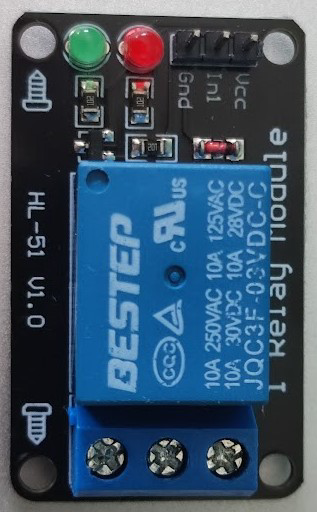
 Design with 1-kanaals 3V relais module in Cirkit Designer
Design with 1-kanaals 3V relais module in Cirkit DesignerIntroduction
The 1-kanaals 3V relais module by Kiwi is a single-channel relay module designed to operate at a low voltage of 3V. This module is ideal for controlling high-voltage devices using low-voltage signals, making it a versatile component in automation and control systems. It acts as an electrically operated switch, allowing microcontrollers or other low-power devices to safely control high-power circuits.
Explore Projects Built with 1-kanaals 3V relais module
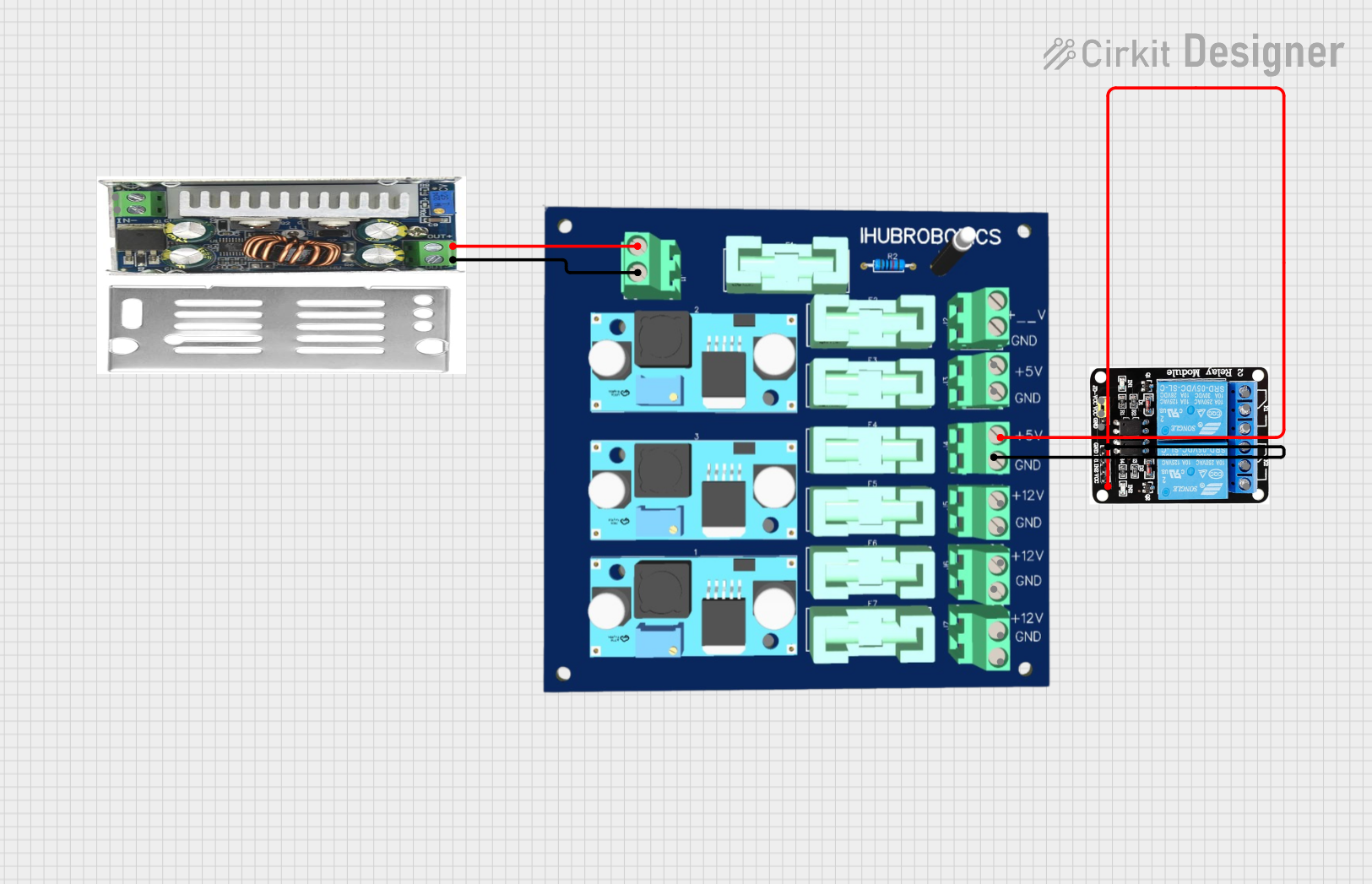
 Open Project in Cirkit Designer
Open Project in Cirkit Designer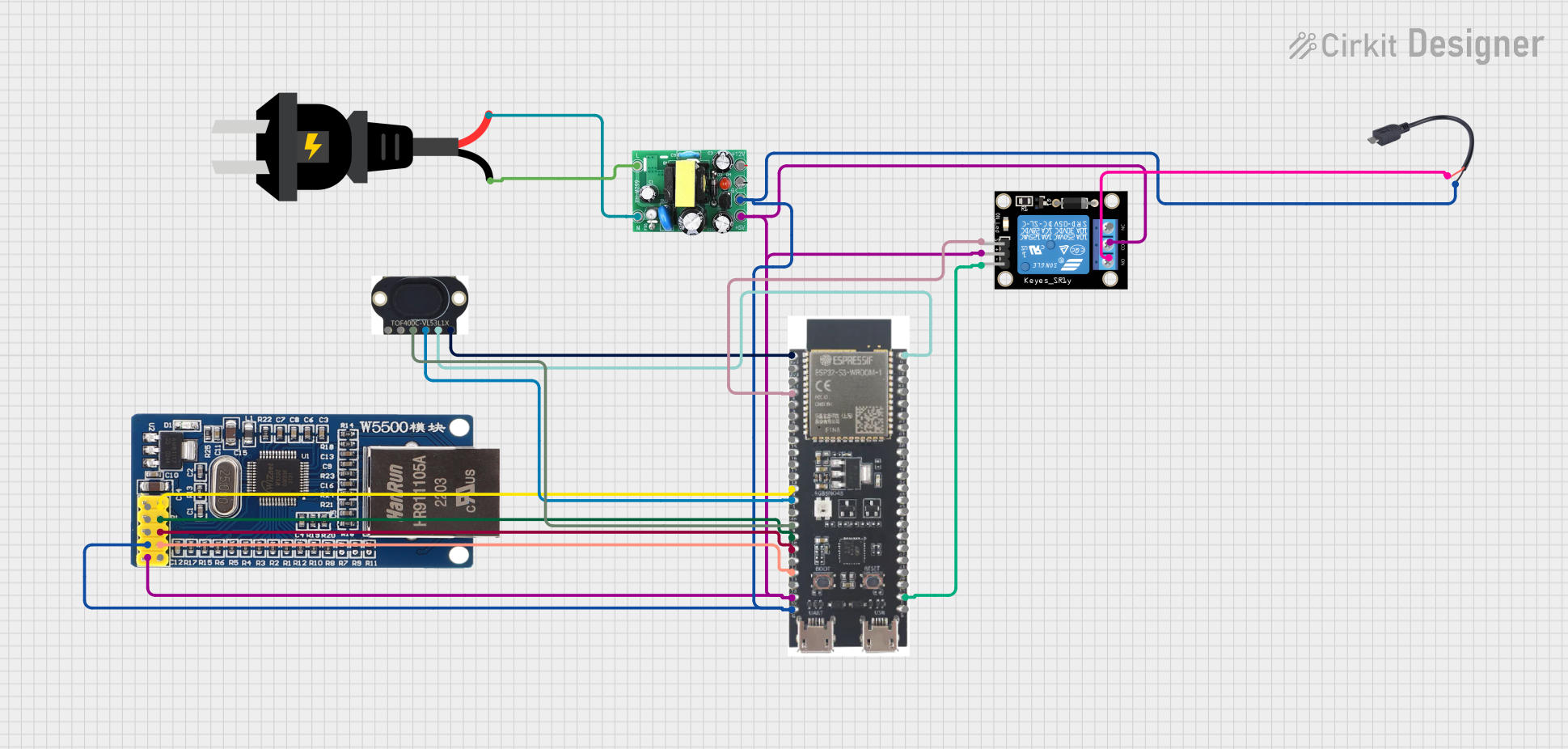
 Open Project in Cirkit Designer
Open Project in Cirkit Designer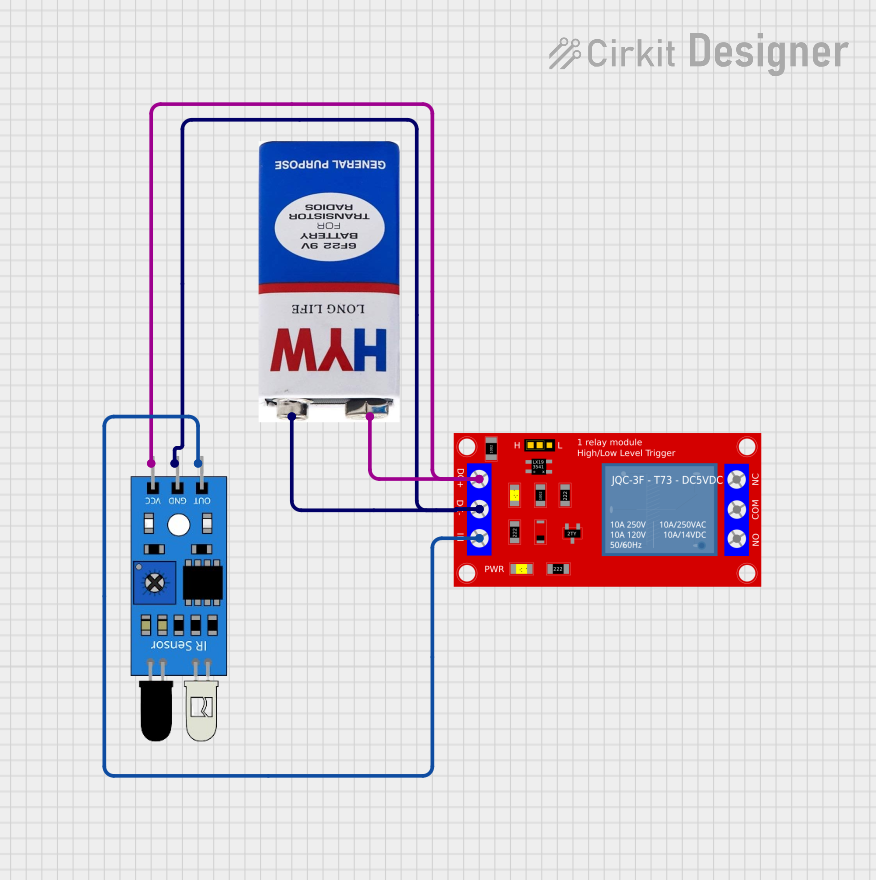
 Open Project in Cirkit Designer
Open Project in Cirkit Designer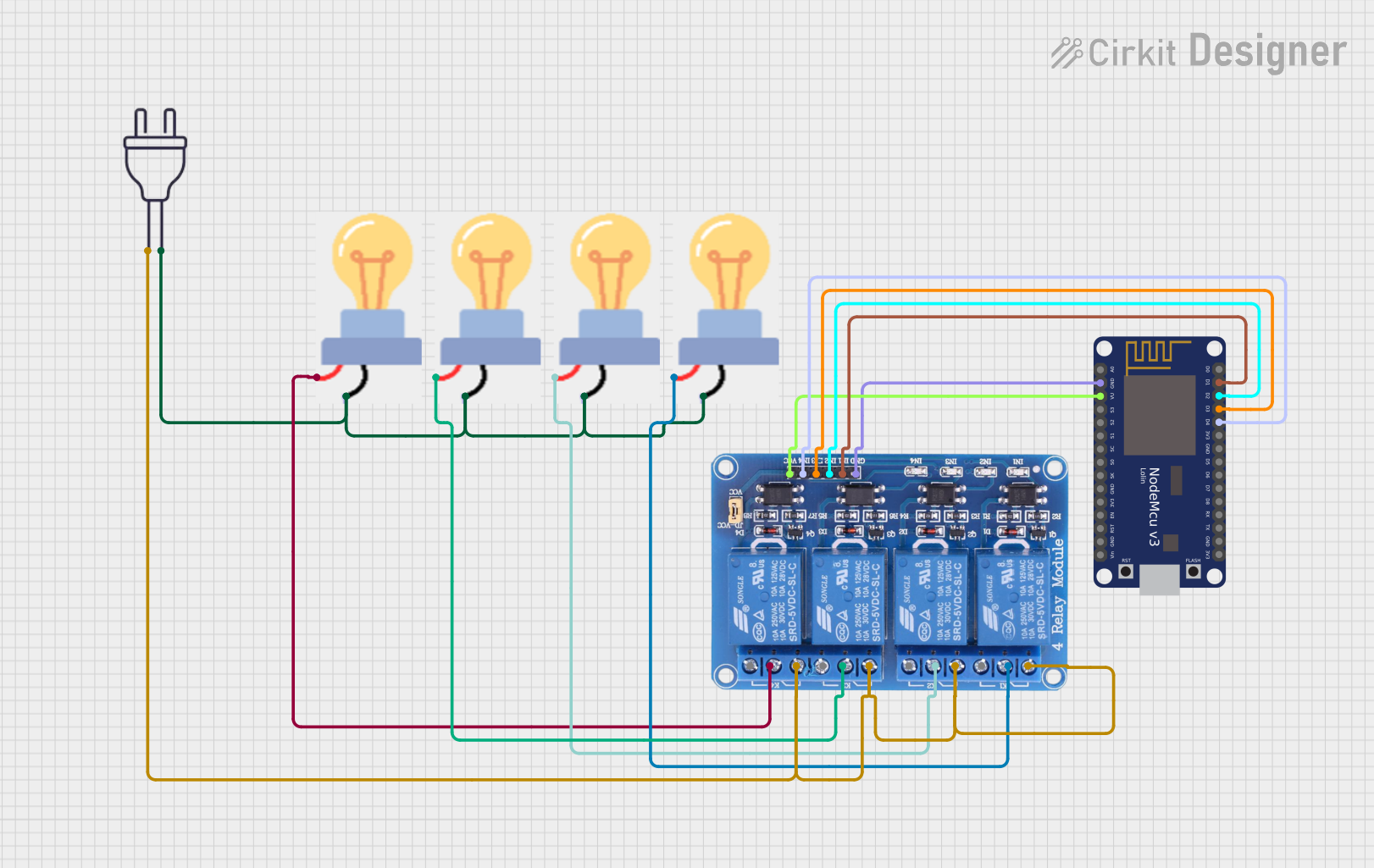
 Open Project in Cirkit Designer
Open Project in Cirkit DesignerExplore Projects Built with 1-kanaals 3V relais module

 Open Project in Cirkit Designer
Open Project in Cirkit Designer
 Open Project in Cirkit Designer
Open Project in Cirkit Designer
 Open Project in Cirkit Designer
Open Project in Cirkit Designer
 Open Project in Cirkit Designer
Open Project in Cirkit DesignerCommon Applications and Use Cases
- Home automation systems (e.g., controlling lights, fans, or appliances)
- Industrial control systems
- Robotics and IoT projects
- Motor and pump control
- Signal isolation between low-power and high-power circuits
Technical Specifications
The following table outlines the key technical details of the 1-kanaals 3V relais module:
| Parameter | Specification |
|---|---|
| Operating Voltage | 3V DC |
| Trigger Voltage | 2.7V to 3.3V DC |
| Maximum Load Voltage | 250V AC / 30V DC |
| Maximum Load Current | 10A |
| Relay Type | SPDT (Single Pole Double Throw) |
| Isolation | Optocoupler isolation for safety |
| Dimensions | 50mm x 26mm x 18mm |
| Weight | ~15g |
Pin Configuration and Descriptions
The module has a total of 6 pins and terminals, as described below:
Input Pins (Low Voltage Side)
| Pin | Name | Description |
|---|---|---|
| 1 | VCC | Connect to a 3V DC power supply (positive terminal). |
| 2 | GND | Connect to the ground of the power supply. |
| 3 | IN | Signal input pin. A HIGH signal activates the relay, and a LOW signal deactivates it. |
Output Terminals (High Voltage Side)
| Terminal | Name | Description |
|---|---|---|
| 1 | COM | Common terminal for the relay switch. |
| 2 | NO | Normally Open terminal. Connect the load here if you want it to be OFF by default. |
| 3 | NC | Normally Closed terminal. Connect the load here if you want it to be ON by default. |
Usage Instructions
How to Use the Component in a Circuit
- Power the Module: Connect the VCC pin to a 3V DC power supply and the GND pin to the ground.
- Control Signal: Connect the IN pin to a microcontroller (e.g., Arduino UNO) or any other control circuit. A HIGH signal (3V) will activate the relay, while a LOW signal (0V) will deactivate it.
- Connect the Load:
- For devices that should be OFF by default, connect the load between the COM and NO terminals.
- For devices that should be ON by default, connect the load between the COM and NC terminals.
- Isolation: Ensure proper isolation between the low-voltage control side and the high-voltage load side to prevent damage or hazards.
Important Considerations and Best Practices
- Current Ratings: Ensure the load does not exceed the relay's maximum current rating of 10A.
- Flyback Diode: If controlling an inductive load (e.g., motors), use a flyback diode across the load to protect the relay from voltage spikes.
- Safety: Always handle high-voltage connections with care. Disconnect power before making any changes to the circuit.
- Signal Stability: Use a pull-down resistor on the IN pin to prevent false triggering due to noise.
Example: Connecting to an Arduino UNO
Below is an example of how to control the relay module using an Arduino UNO:
Circuit Connections
- Connect the VCC pin of the relay module to the 3.3V pin of the Arduino.
- Connect the GND pin of the relay module to the GND pin of the Arduino.
- Connect the IN pin of the relay module to digital pin 7 of the Arduino.
- Connect a load (e.g., a light bulb) between the COM and NO terminals of the relay.
Arduino Code
// Define the relay control pin
const int relayPin = 7;
void setup() {
// Set the relay pin as an output
pinMode(relayPin, OUTPUT);
// Ensure the relay is off at startup
digitalWrite(relayPin, LOW);
}
void loop() {
// Turn the relay ON
digitalWrite(relayPin, HIGH);
delay(5000); // Keep the relay ON for 5 seconds
// Turn the relay OFF
digitalWrite(relayPin, LOW);
delay(5000); // Keep the relay OFF for 5 seconds
}
Troubleshooting and FAQs
Common Issues and Solutions
Relay Not Activating:
- Cause: Insufficient voltage or current to the VCC pin.
- Solution: Ensure the power supply provides a stable 3V DC and sufficient current.
False Triggering:
- Cause: Electrical noise or floating IN pin.
- Solution: Use a pull-down resistor (e.g., 10kΩ) on the IN pin to stabilize the signal.
Load Not Switching:
- Cause: Incorrect wiring of the load to the relay terminals.
- Solution: Double-check the connections to the COM, NO, and NC terminals.
Overheating:
- Cause: Load exceeds the relay's maximum current rating.
- Solution: Use a load within the specified 10A limit or use a higher-rated relay.
FAQs
Q1: Can I use this relay module with a 5V microcontroller?
A1: Yes, but you will need a level shifter or resistor divider to step down the control signal to 3V.
Q2: Is the relay module safe for switching AC loads?
A2: Yes, it can handle up to 250V AC, but ensure proper insulation and safety precautions.
Q3: Can I control multiple relays with one microcontroller?
A3: Yes, as long as each relay has its own control pin and the microcontroller can supply sufficient current.
Q4: What is the purpose of the optocoupler?
A4: The optocoupler provides electrical isolation between the low-voltage control circuit and the high-voltage load circuit, enhancing safety.